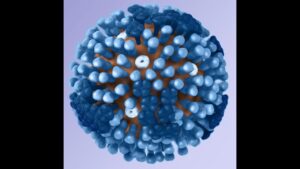Influenza
 The influenza virus causes the sickness known as the flu. It can have severe symptoms as head and body aches, fever, sore throat, and respiratory problems. Winter is when influenza is most prevalent because an epidemic of cases can occur.
The influenza virus causes the sickness known as the flu. It can have severe symptoms as head and body aches, fever, sore throat, and respiratory problems. Winter is when influenza is most prevalent because an epidemic of cases can occur.
The Northern Hemisphere’s (which includes the United States) flu season, during which flu cases sharply increase, lasts from October through May. Between December and February is usually when there are the most cases (peak).
SYMPTOMS
Symptoms of the flu usually come on quickly, and can include:
- Body aches.
- Sore throat.
- Runny or stuffy nose (congestion).
- Tiredness or feeling run down.
- Diarrhea or vomiting (usually only in kids).
You may not have all of these symptoms.
CAUSES
Flu is brought on by the influenza virus. The three most prevalent forms of influenza that affect people are A, B, and C. The symptoms of influenza A and B are more severe and are seasonal (the majority of cases occur in the winter). Influenza C doesn’t have severe symptoms and isn’t seasonal; it affects around the same number of people all year long.
Both H1N1 (“swine flu”) and bird flu are influenza A subtypes.
PREVENTION
Flu is brought on by the influenza virus. The three most prevalent forms of influenza that affect people are A, B, and C. The symptoms of influenza A and B are more severe and are seasonal (the majority of cases occur in the winter). Influenza C doesn’t have severe symptoms and isn’t seasonal; it affects around the same number of people all year long.
Both H1N1 (“swine flu”) and bird flu are influenza A subtypes.
Other ways to reduce your risk of getting the flu include:
- Wash your hands often with soap and water. If you aren’t able to use soap and water, use an alcohol-based hand sanitizer.
- Cover your nose and mouth when you sneeze or cough. Cough or sneeze into your elbow or a tissue rather than your bare hand.
- Avoid being around other people when you or they are sick with the flu or other infectious diseases.
- Consider wearing a mask if you’re sick and can’t avoid being around others.
- Avoid touching your face, eyes, nose and mouth.
- Don’t share food or eating utensils (forks, spoons, cups) with others.
